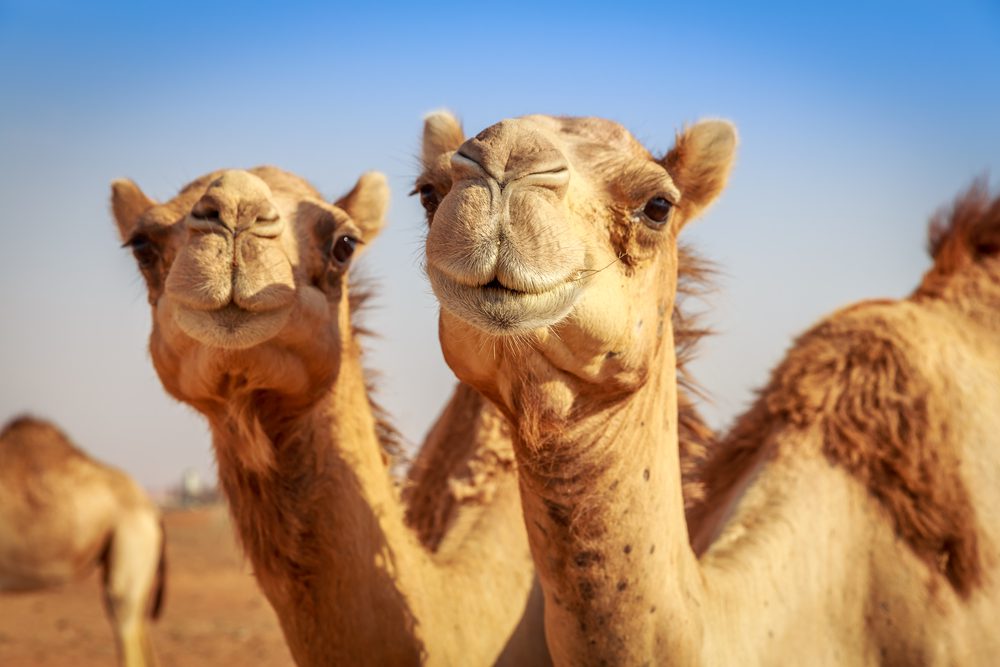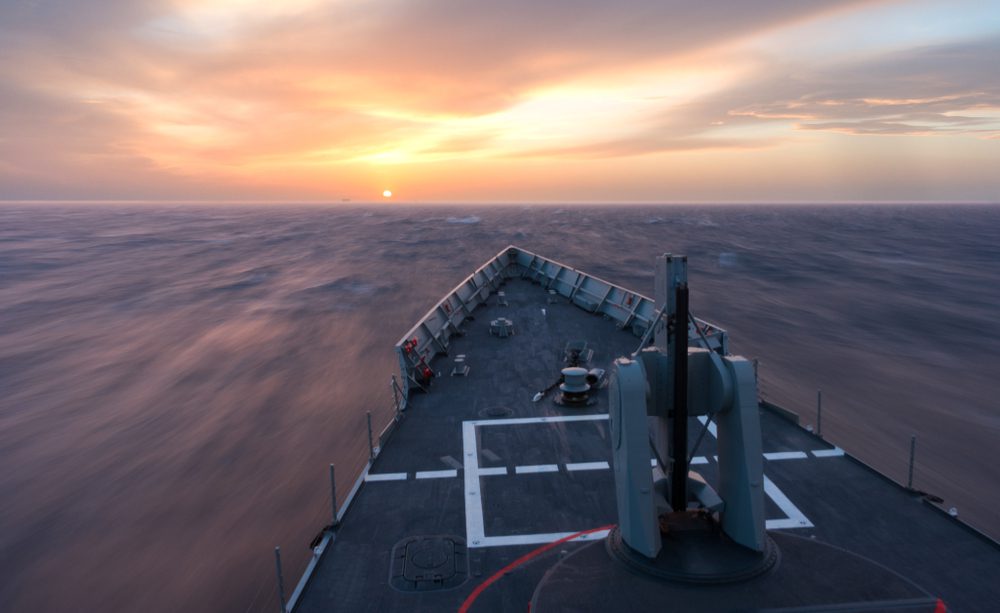It is important that we acknowledge the sacrifice and bravery soldiers have on the front. However, it is equally important to do so when it comes to military animals.
Since the beginning of time, brutal and cruel wars took place all around the world, making millions of victims, and forcing men to defend their territories. During these conflicts thousands of animals played a major role in the battles, making them brave heroes as well.
To raise morale and give a feeling of comfort, many exotic animals were used during the First and Second World Wars and many other significant battles.
We bet you didn’t know these 10 animals were war heroes as a result of their actions and bravery during the vicious wars that took place in the last decade. You may be familiar with the involvement of dogs and horses and how courageous they turned out to be.
However, did you know camels also had a major role? How about ducks? No? Then check out these 10 brave military animals and what fascinating stories they have.

1. Imperial Camel Corps
Yes, you read that correctly. Just like horses, camels have the ability to carry considerable loads and, the best part is they can survive without water for several days, which made them a great asset in times of war, in a warm environment.
The animals were used to carry the soldiers to the scene and then the men would fight on foot. Founded in 1916, the whole campaign would be named the Imperial Camel Corps.
Used mostly in conflicts that took place in the Middle East, the camels played a vital part in the Palestine and Sinai campaigns during the First World War.
2. A good swimmer
During the First World War, Tirpitz the pig was the mascot of HMS Glasgow. Originally, she was kept on a German vessel, however, the boat was sinking and she was left there to drown.
The events took a pleasant turn when Tirpitz managed to escape and swim until she was found by the HMS Glasgow and they rescued her from the mighty waters.
They rewarded the animal with a false Iron Cross for her bravery and she remained their mascot until 1916 when she retired.
If you wish to find out more about Tirpitz the pig and her incredible story you can visit the Imperial War Museum located in London, where her head has been displayed for years.
3. The messengers
During World War II, Gustav was one of the few messengers given to Reuters and one of the birds belonging to the Royal Air Force.
In June 1944, Gustav was the messenger who delivered the news and details about the D-Day landings. The historic event took place in Normandy, and so Gustav had to fly from France back to Portsmouth.
He flew for over 5 hours, more than 200 km, to deliver the following message: “First assault troops landed 0750. The signal says no interference from enemy gunfire on the beach…Steaming steadily in formation. Lightning, typhoons, and fortresses crossing since 0545. No enemy aircraft seen”.
A few months later the pigeon was awarded the Dickin Medal.

4. When bears learn to take showers…
During the Second World War, Polish soldiers adopted Wojtek, a Persian bear, and trained him like a soldier. His main activities involved: taking showers, wrestling, and drinking beer.
As soon as the Unit was deployed to Europe the only way Wojtek was allowed to come with them was if they made him an official soldier. And so, the animal was named Corporal Wojtek for the artillery supply unit.
During the Battle of Monte Cassino, the Persian bear loaded boxes of artillery into trucks until the battle was over. How did the army honor Wojtek? They put his image on the unit’s official badge.
After the war ended the animal was placed at the Edinburgh Zoo. Soon a movie about his life will be released.
5. Bill the mascot
During World War I, Canadian soldiers bought Bill the goat and kept him as a mascot. He was there to cheer up the wounded and home-sick soldiers.
Even though he was there to raise morale, he saved three lives when he pushed the men into a trench to avoid an explosion.
Fun fact: The animal got arrested for eating military equipment and once, he went missing.
After the war ended, Bill was decorated with multiple medals for his good deeds: the 1914 Star, the General Service Medal, and surprisingly, the Victory Medal. If you wish to see the war hero and learn more about him you can visit the Broadview Museum, where he is mounted.
6. Poker game with a twist
During World War II, the Marine won a duck, named Siwash, over a poker game in New Zealand.
Even though she was their mascot, in 1943, while the Battle of Tarawa was taking place, Siwash engaged in a fight with a Japanese rooster. And even though she was injured, she won the fight.
Fun fact: Siwash had a soft spot for beer.
She retired at the Lincoln Park Zoo where her gender was finally revealed since the Marine thought the duck was male.
7. The horse Germans couldn’t kill
Horses were pretty common during the First World War, however, one of the many heroes to be remembered is Warrior. He was the horse of Captain Jack Seely and over the years he participated in major battles such as the one on the Somme and at Ypres.
Together with Seely, they led men in battles, and the most notable one was the last major cavalry charge of the war where they led the Canadian Cavalry to the Moreuil Wood, in 1918.
The animal was known as the “horse Germans could not kill”. After 100 years since the war started, Warrior was awarded the Dickin Medal.

8. The Navy cat
Born in 1947, in Hong Kong, Simon was taken aboard the HMS Amethyst. His job? To keep control of the rat situation on the ship.
However, the ship was attacked by the communists on the Yangtze River and the cat had gone missing for a few days while having shrapnel injuries and facial burns.
The doctor took care of him and when he finally recovered he resumed his duties and visited the wounded soldiers to cheer them up.
When the animal arrived back in Hong Kong he received a Dickin Medal and a campaign ribbon. Unfortunately, he soon passed away after developing a serious infection.
He received full naval honors.
9. Exotic allies
You are already familiar with the fact that pigeons were often used during wars to deliver messages or news. However, did you know that other birds were useful during a war?
For instance, parrots were known to give warnings when enemy aircraft were approaching. While on the sea, seagulls were usually exposed to the presence of submarines and mines which helped save the lives of thousands of sailors.
With the help of the canaries, also known as the miners’ friends because of their special ability to recognize gases, during the war these birds could detect when enemy poisonous gas was used.
10. Chimps in Space
During the Cold War, the United States was using chimps to explore outer space. Desperately wanting to win the war, the U.S. sent Ham into space, making him the first primate launched into space.
The animal was a vital part of the U.S. space program called Project Mercury. The animal was raised in captivity and prepared his whole life for this mission. The historic event took place on January 1961 in Cape Canaveral, Florida.
With Ham’s mission, it was finally proved you can perform tasks in outer space. His flight was a little over 16 minutes long and he suffered one small injury on his nose.
He died 2 years later and he was buried at the International Space Hall of Fame.
Fun fact
Both Sweden and Russia tried, in times of war, to use moose as a winter alternative for horses. However, their attempt proved to be a ludicrous failure. Why?
The first reason was, they got sick incredibly fast which made them pretty useless in a battle. The second motive was, they were very hard to feed and third, they were known as the type of animal to run away when facing a dangerous situation.
In a nutshell, they were cowards on the battlefield.
Want to read more about other animals that went to war? Check out this book!
You may also find interesting this article: These 7 Wild Animals Are Invading US Cities This Year.











